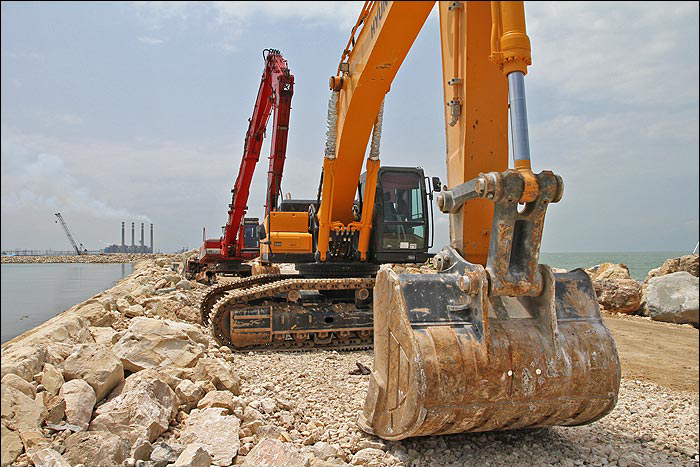Construction of the offshore infrastructure at the Caspian Sea coast has made over 70 percent progress. It is designed to transfer and swap oil, the building engineering manager of Iranian Oil Terminals Company (IOTC) said.
The project, due for completion next year, will increase the capacity to receive and transfer oil up to 2.5 million barrels per day (bpd), Shana news agency quoted Abdollah Ahmadi as saying.
To raise its oil swap capacity, Iran plans to develop coastal infrastructure in the northern port city of Neka, 200 kilometers (124 miles) north of Tehran.
In addition to raising oil reception capacity, the infrastructure will help meet the needs of naval fleets, according to the IOTC manager.
The development plan is projected to increase the oil swap capacity at the Neka terminal from its current volume of 200,000 bpd to 500,000 in the initial phase, and then to 1.5 and 2.5 million bpd in coming years as mid-term and long-term plans come on stream.
Iran imports oil from the Caspian Sea littoral states to be refined at Tehran and Tabriz oil refineries, and then delivers an equivalent amount to buyers in the Persian Gulf. The Caspian Sea region, which includes Russia, Azerbaijan, Kazakhstan, Turkmenistan, Uzbekistan, and Iran, has significant oil and natural gas reserves from both offshore deposits in the sea itself and onshore fields.
Although territorial disputes and limited exploration in offshore areas had made it difficult to determine the total amount of hydrocarbon resources, proved and probable reserves in the Caspian basins is estimated at 48 billion barrels of oil and 8.3 trillion cubic meters of natural gas.
Almost 75 percent of oil and 67 percent of natural gas reserves are located within 100 miles of the coast. Traditionally an oil-producing area, the Caspian area’s importance as a natural gas producer is growing.


